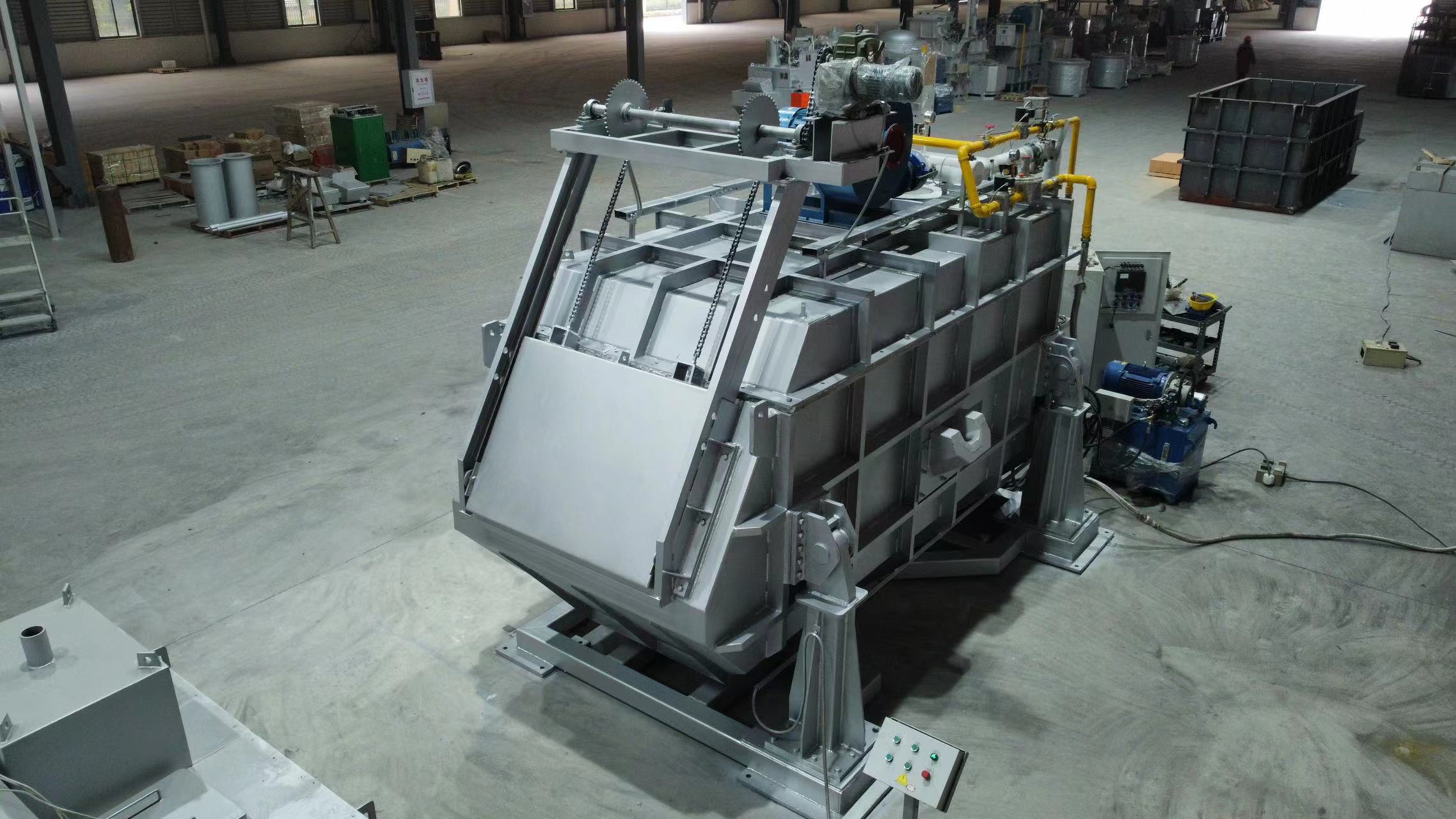The tilting refining furnace is essentially a reverberatory furnace mounted on a tilting bracket. It draws on the methods of a rotary furnace in the oxygen blowing, reduction, copper tapping and slag tapping operations. It has the characteristics of a reverberatory furnace that can be charged, melted and slag removed, and the furnace angle can be changed according to different operating cycles to meet the requirements of the process. It also has the advantage of a rotary anode furnace that the furnace position can be changed according to different operating cycles, and has made significant improvements in operating conditions and environmental protection.

Its main advantages are that the furnace tilting adopts two hydraulic push rod devices, which is safe and reliable to operate and convenient for slagging; a special feeder is used, and the feeding is flexible and fast; the heavy oil burner adopts secondary atomization, and uses oxygen-enriched combustion to achieve high combustion efficiency, low heavy oil consumption, and low NO content; the thermal utilization rate is high, and the furnace has good sealing performance. The smelting flue gas is cooled by heat absorption in the waste heat boiler and dust is collected by the bag. A small amount of flue gas overflowing from the furnace body enters the ring collection system and then enters the bag for emptying, and meets the emission standards; the redox air duct is fixed on the furnace body.
Compared with the fixed reverberatory furnace, the main structural feature of the tilting furnace is that butterfly spring clamping devices are respectively provided at both ends of the furnace body and above the two end walls, and the steel has high strength and rigidity; the front and rear walls of the reverberatory furnace are vertical, while the front and rear walls of the tilting furnace are vertical in the molten pool area, but the airflow area is arched, which can ensure that the furnace wall has sufficient stability when the furnace tilts back and forth, thereby improving the heat transfer conditions and airflow movement in the furnace.
The height of the bottom edge of the charging port of the reverberatory furnace from the molten pool surface is relatively small, while the height of the bottom edge of the charging port of the tilting furnace from the molten pool surface is relatively large; the copper outlet of the reverberatory furnace is located at the end of the furnace, the copper outlet of the tilting furnace is located in the middle of the rear wall, and the redox tubes are located on both sides of the copper outlet; the center line of the exhaust port of the tilting furnace coincides with the rotation center.